Svalbard
June, 2023

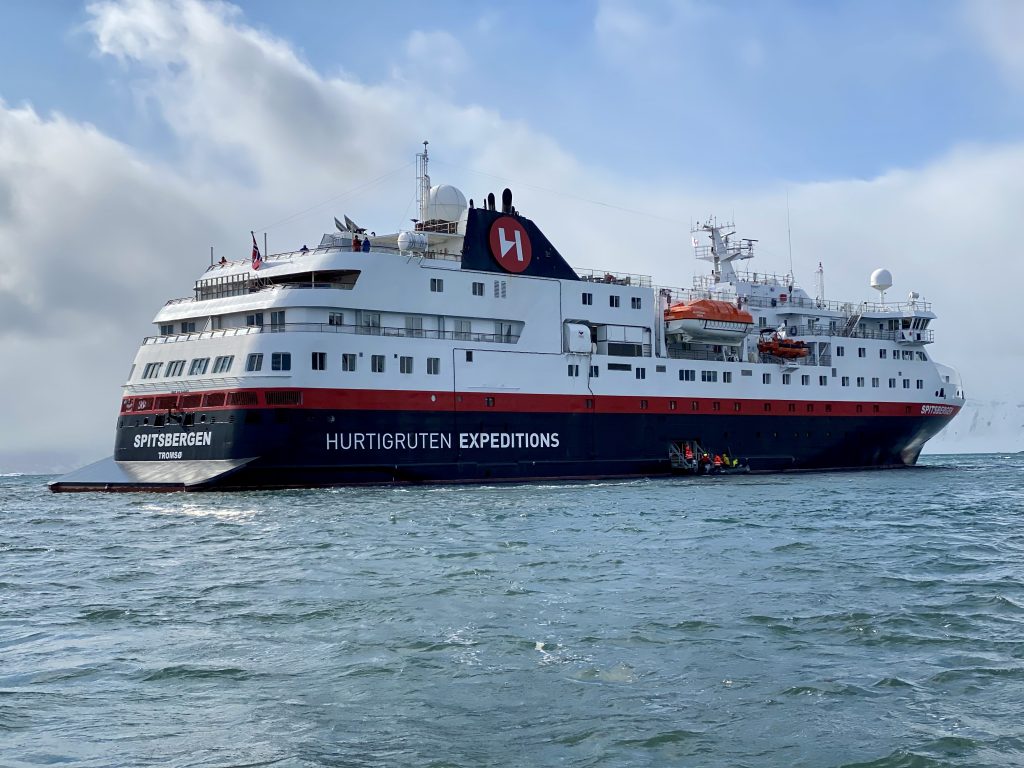

Svalbard is administered by Norway
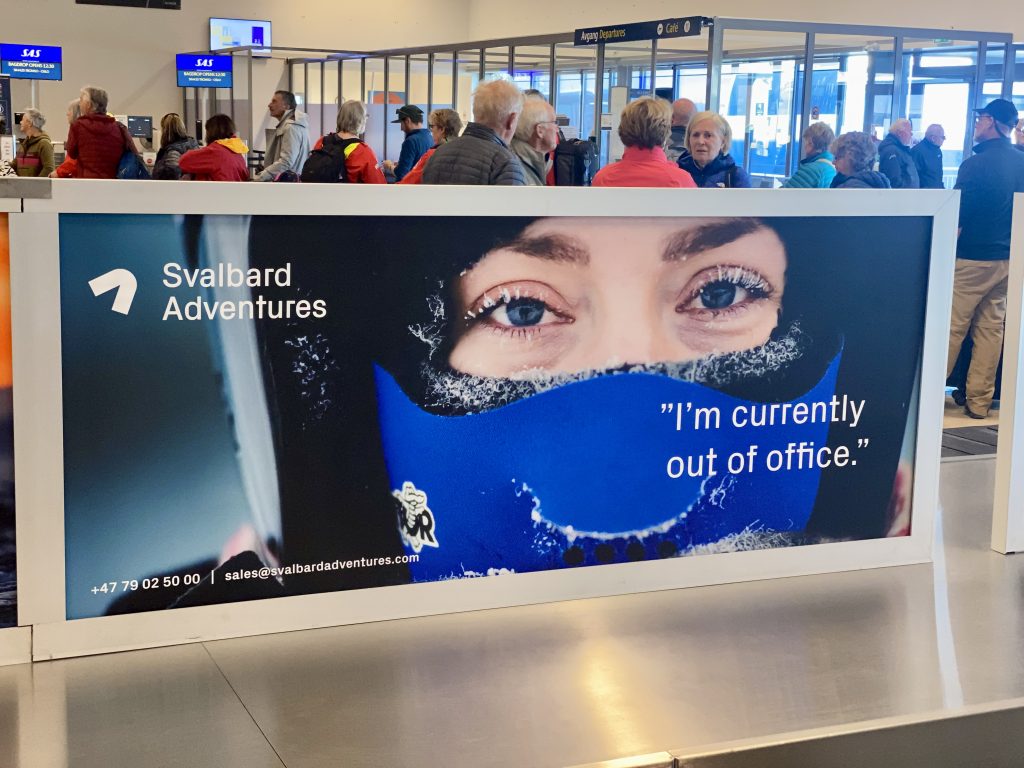
My two joys in traveling are meeting interesting people and visiting interesting places. This year's European trip has delivered beyond expectations. One week each in Aachen, Germany, and Stockholm, Sweden, provided heartwarming encounters with old friends, some of whom I've known for over fifty years.
Our final destination, Svalbard, has been a totally new experience. The name Svalbard refers to a collection of Arctic islands located at 80 degrees North Latitude, only around five hundred miles from the North Pole. The largest island within the Svalbard group is Spitsbergen (the name refers to the mountain peaks first seen by the early explorers). There are currently around 2500 year-round residents in the single Svalbard "city" of Longyearbyen.

Svalbard is administered as a territory of Norway. But Svalbard is regarded as open to all nationalities, as long as one can afford to pay the high living costs. No visa or residence permit is necessary. Norway's otherwise high taxes are not collected on Svalbard. But there is very limited housing available, all of which is controlled by the companies working in Longyearbyen or by the university. So in order to live in Svalbard, it is necessary to either be employed by one of the companies located here, or else be a student at the Svalbard University. Meteorology and mining are the primary fields studied at the Svalbard University. If someone's job ends or their studies are completed, that person must then leave. Interestingly, no elderly people are allowed to reside in Svalbard due to the lack of a hospital.
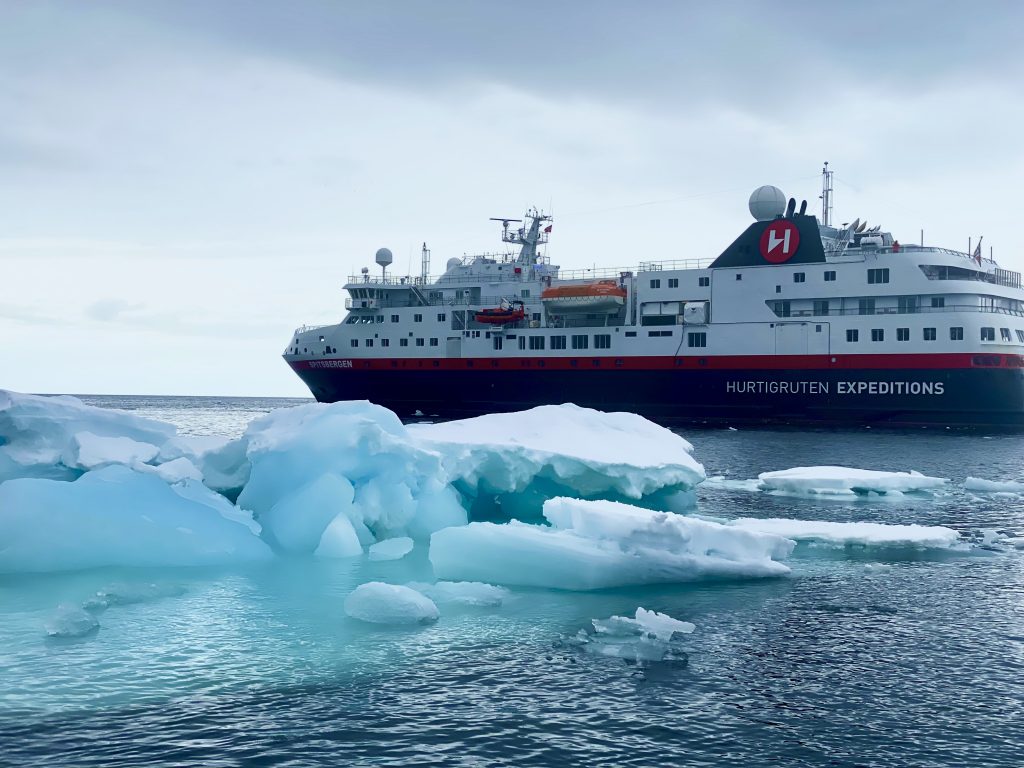
Tourism is increasing, but is limited by the Norwegian government due to lack of resources to serve visitors. Large cruise ships are not allowed. Susan and I are traveling on a smaller "expedition" ship, the Spitsbergen from the Norwegian Hurtigruten Cruise Line. The ship has only about seventy passengers on this cruise, making the ship only half full. We had previously sailed up and down the Norwegian coast twice with Hurtigruten. The Norwegian coastal cruise remains one of our all-time favorite cruise destinations.
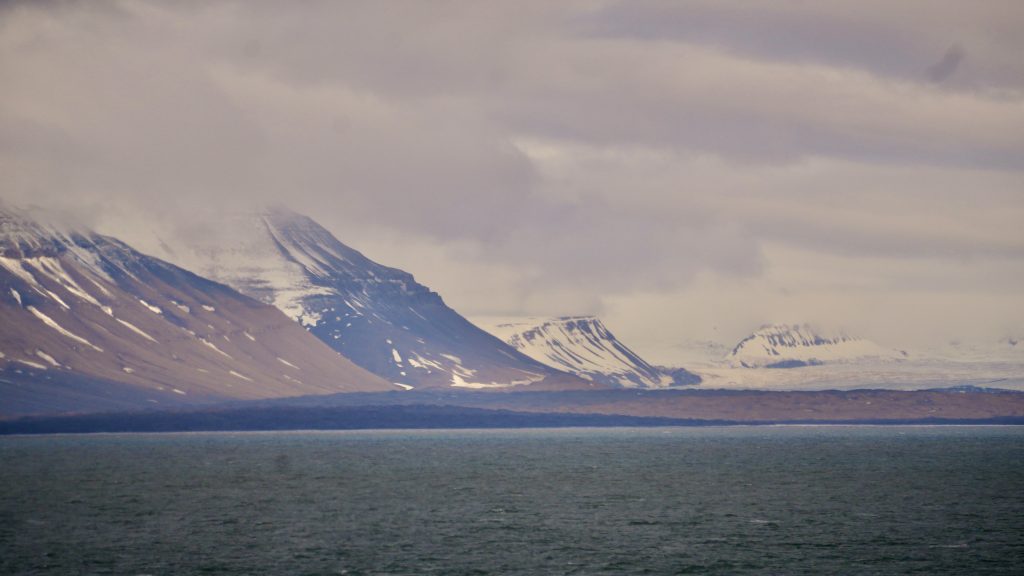
The Svalbard islands were discovered in the 1600's, after which Dutch, English, Norwegian, and Russian sailors used the islands as a location for harvesting whales in order to extract the whale oil from the thick blubber (fatty tissue) found on the whales that flourish in cold artic waters. We were reminded that in the 1600-1700's there was no electricity and no oil imports from the Middle East, resulting in the harvesting of whales and walruses to obtain the oil that could be rendered by chopping up the animals and boiling the flesh. The resulting oil could be burned in lamps, as well as being used to make soap. The leftover meat and bones from the harvested creatures were simply discarded.
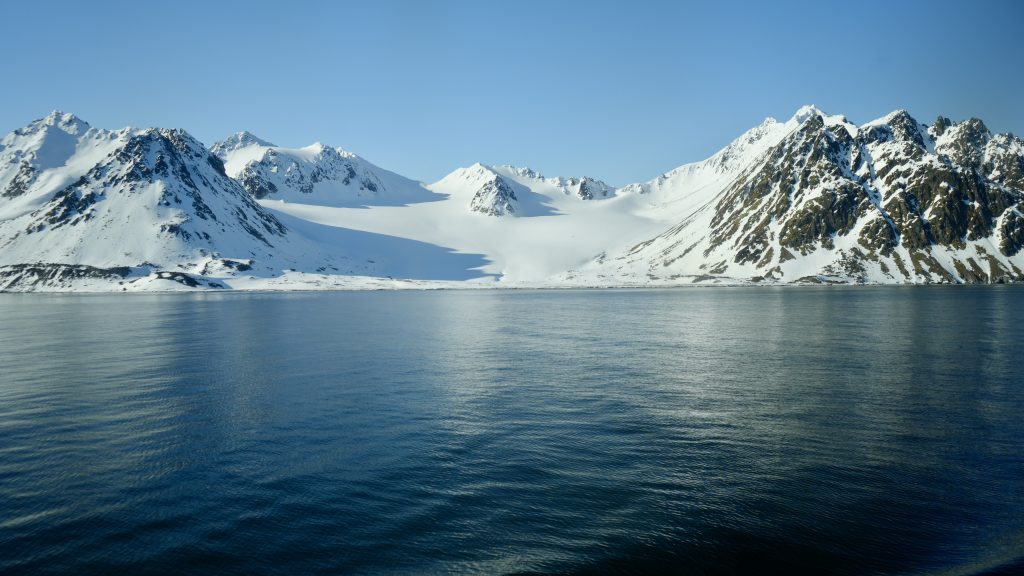
Starting in the 1700's, coal mining also commenced on the Svalbard islands. The process of mining in this harsh climate makes it difficult to profit from the efforts. The Russians had built and operated a large mining operation, which has since been abandoned in the last decade. NASA has a satellite tracking facility located in one of the fjords our ship visited. All passengers were required to turn off our phones and put our computers in airport mode due to the possible interference with NASA's sensitive tracking instruments. The radio exclusion zone is a twenty-five miles circle around the NASA transmitters and tracking instruments. It also serves as an early warning system against any potential Russian missile launches.

Traveling around the various islands and into dramatic fjords containing multiple glaciers, we were reminded of global warming. Regional maps go out of date quickly, as previously charted glaciers retreat every year changing from what is shown on the maps. Nevertheless, we observed countless glaciers…I am sure that there are hundreds of glaciers spread around the many islands. From certain locations, one could view five or six glaciers converging into the fjords from different locations. Some of the islands are crowned by huge ice sheets (as are found on Greenland and to a limited extent on Iceland).
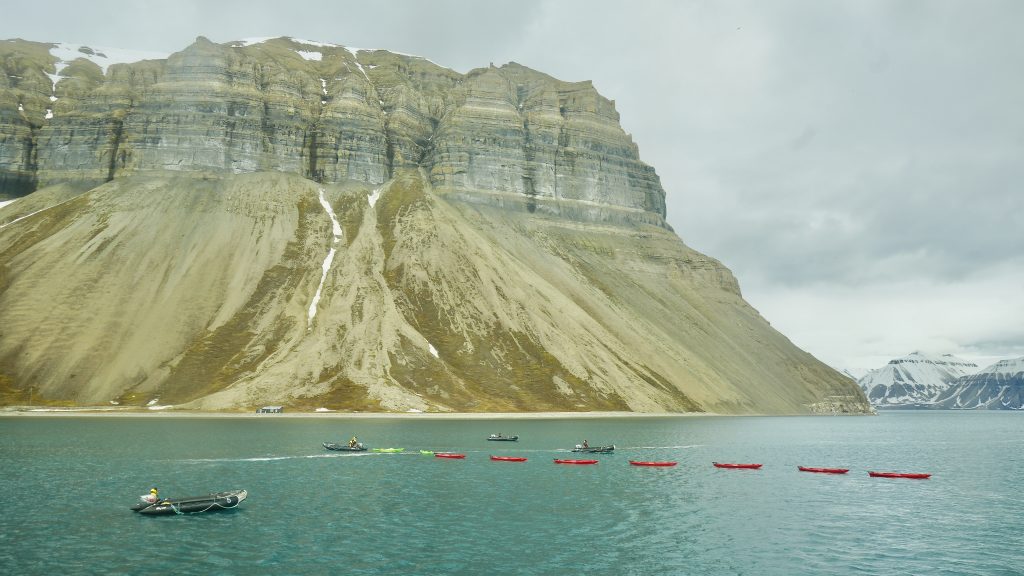
The ground is "tundra" or permafrost, meaning that for much of the year the ground is totally frozen. But an upper layer of the tundra thaws and refreezes during the warmer months. As I write this on June 13, the outside temperature is in the mid thirties Fahrenheit, between 0-4 degrees Centigrade. We have experienced rain and snow every day, with only a brief period of welcome sunshine. There are no trees on Svalbard.

Svalbard has received publicity for housing the Global Seed Vault. From Wikipedia: "The Svalbard Global Seed Vault is a seedbank to store seeds from as many of the world’s crop varieties and their botanical wild relatives as possible. A cooperation between the government of Norway and the Global Crop Diversity Trust, the vault is cut into rock near Longyearbyen, keeping it at a natural −6 °C (21 °F) and refrigerating the seeds to −18 °C (0 °F)." Syria has recently requested seeds from the Global Seed Vault to renew its agriculture destroyed during its recent wars.
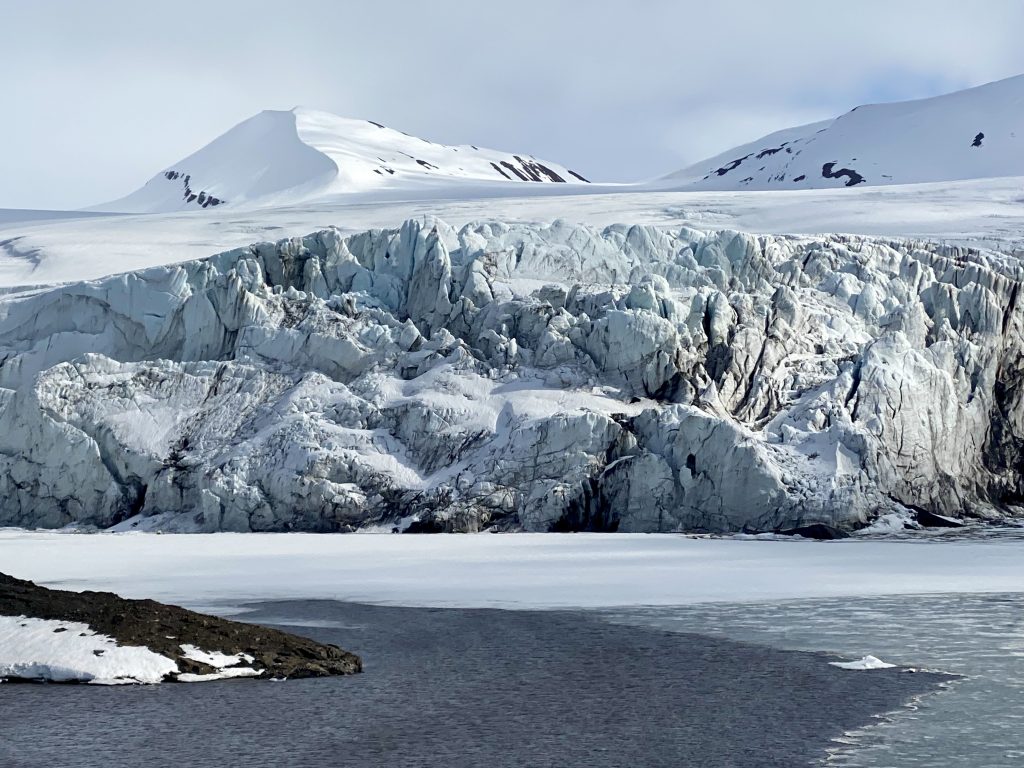
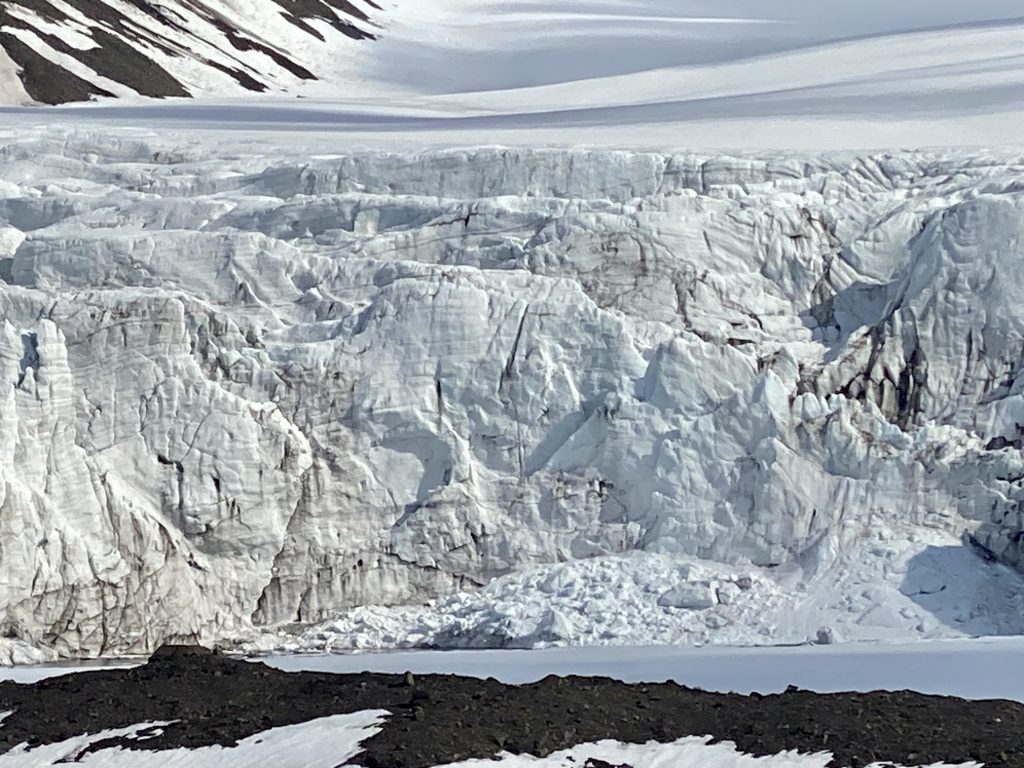
Excursions on the Expedition Ship include hikes on the tundra and trips on rubber boats holding 8-10 people, taking us close to glaciers and transporting us from the ship to shore. We are issued rubber boots and hooded jackets by the cruise line to wear on these excursions.

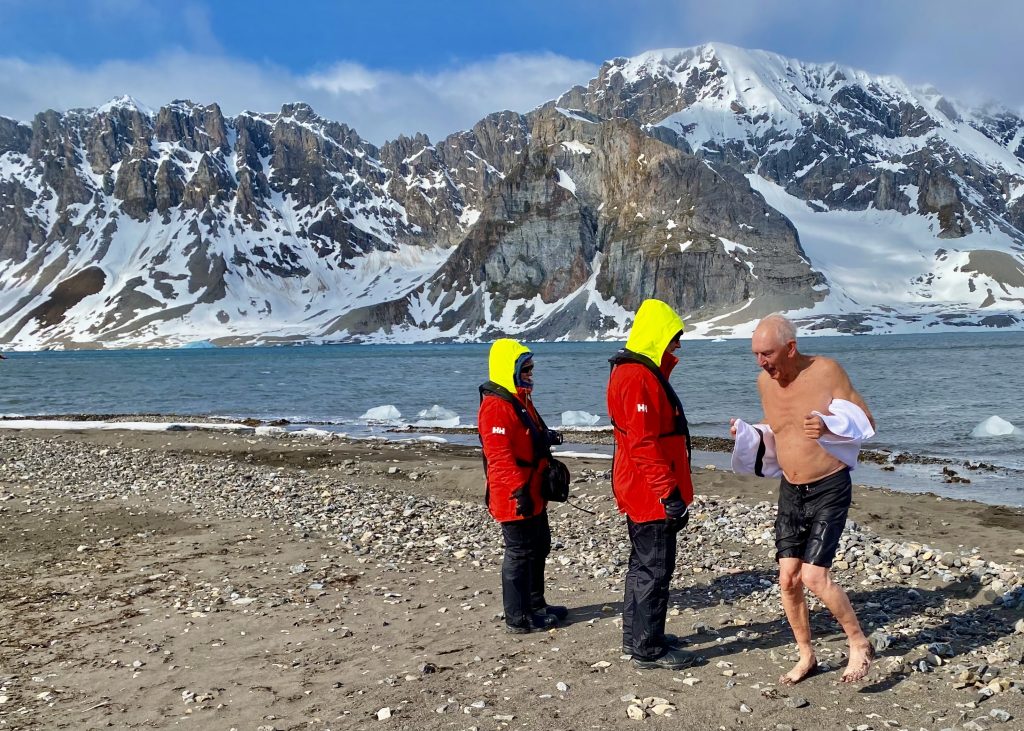
One of our guided hikes took our group away from the fjord and over a ridge. Our guide informed us that this had been the site of a German weather station in WWII. The location was chosen so that the Germans could monitor boat traffic in the fjord, but their base was not visible from below by ships. But at some point, the weather station was discovered by the Norwegians and was destroyed by artillery from a Norwegian ship. Yet, soon afterwards, a German submarine surfaced and disabled the Norwegian ship.
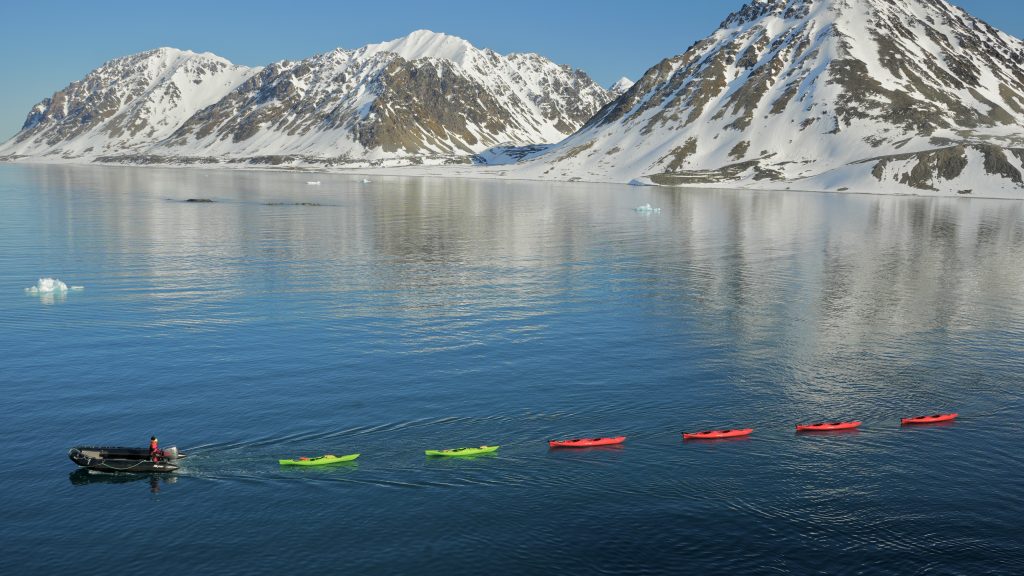
It has been predicted that eventually the ice over the North Pole will totally melt. I feel like we witnessed it with our own eyes! The ice had retreated several miles between the start of our cruise (and the ice map of that day) and when the ship reached the northern coasts to find the ice retreating from the shore. (We were unable to sail around the northern islands, because the ice still extends to the shores. Cruise ships are not ice-breakers.)

Considering the absolute isolation of the Svalbard islands, it is so disturbing to learn of the international military conflicts that were acted out in this wilderness. As mentioned before, whale oil and mining are not profitable here. The only reason for military interest is to control the surrounding sea routes. It is upsetting to learn that the history of human warfare had extended to military battles on these isolated islands.
Currently, the inhabitants of Svalbard are working to preserve the environment within an open international cooperative framework. The people attracted to travel here are eco-tourists. There are no luxury hotels or attractions that offer any alternative to the dramatic nature, as seen in the mountains, glaciers, and abundant birds and sea life.

Svalbard is home to several hundred polar bears. (We haven't seen any yet on this trip.) On our excursions the guides all carry a rifle for defense against any hungry bear, as well as a stun/flash charge to scare it so as not to need to shoot it. Residents of Longyearbyen have been killed by polar bears. If a hungry polar bear perceives you to be a form of food, you had better have a gun. Otherwise, the bears can outrun any person, are fearless, and will likely eat you alive. The main food for polar bears are seals, which are hunted year-round by the bears from the icebergs. But as the polar ice melts, the bears have fewer icebergs on which to wait for a seal to surface from which they dive in and eat the seals.
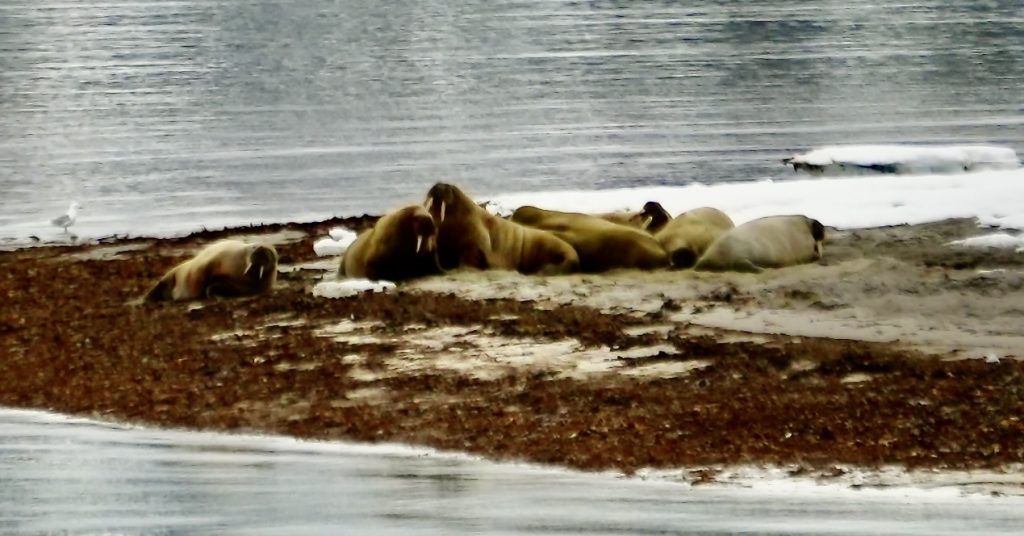
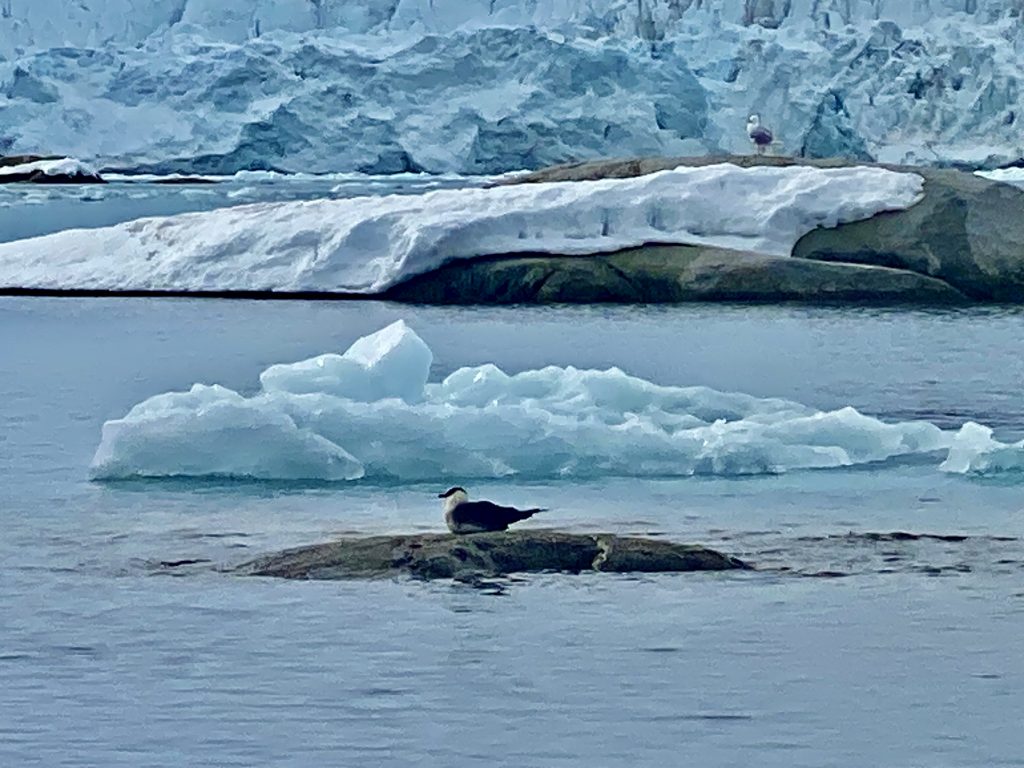
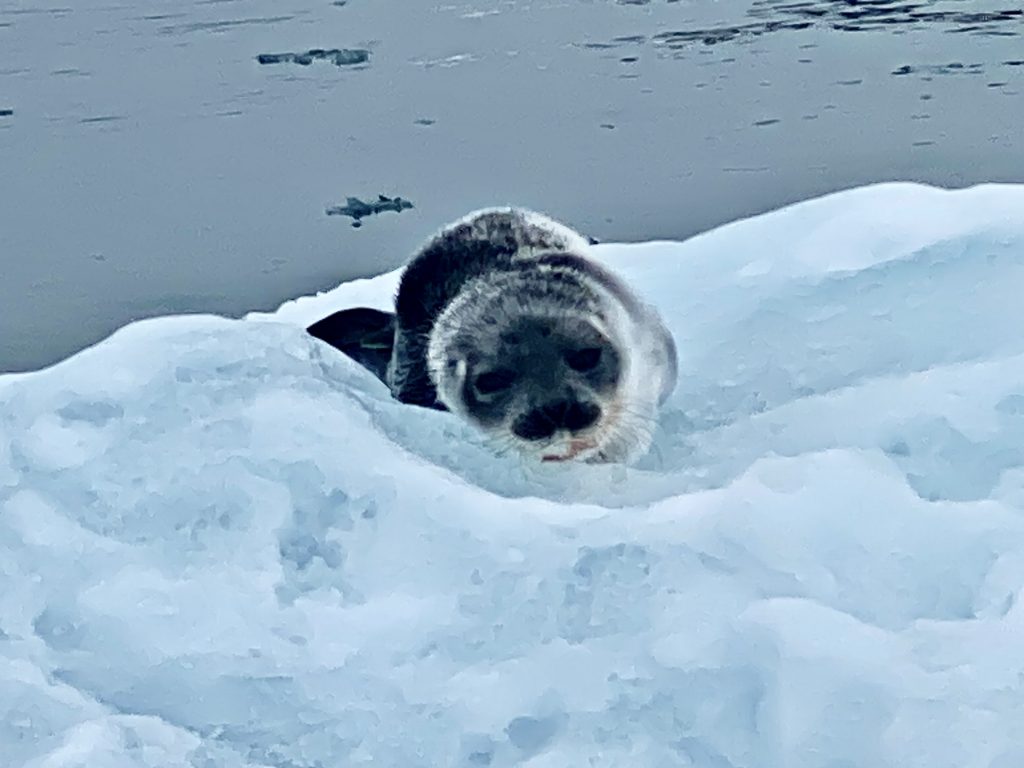
On our first general meeting of all passengers on the cruise, we were shown an ice map, indicating where the solar icecap extends at this time of year. We were uncertain as to how far north the cruise could take us, since the map showed the sheet ice extending south past the upper island coasts. But several days later we personally viewed the actively shrinking ice cap. Our captain sailed the ship parallel to the ice for some time, while our naturalists searched for polar bears through their high-powered binoculars. They spotted one bear about two kilometers out on the ice. But I couldn't see him through my limited camera zoom lens. Besides, the polar bears are totally white and blend in with the ice. (Previously on land, we had seen walruses and white reindeer…white with their winter fur…the reindeer turn brown in summer.)
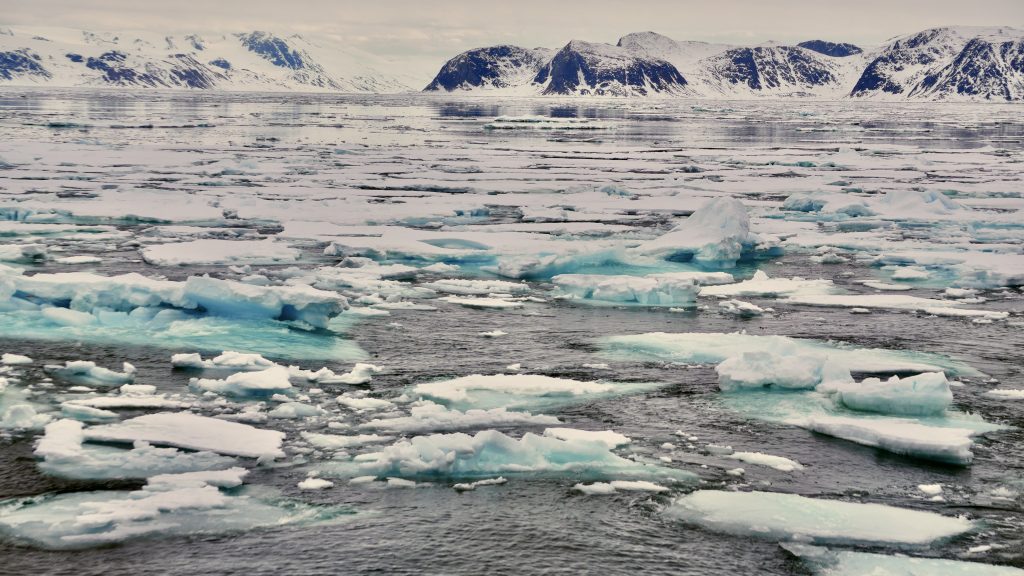
In the morning when our ship arrived up north, the ice was a huge strip that extended down almost to the beach. By the afternoon, it seemed that this strip of ice had broken up into smaller floating icebergs. We went out in the rubber rafts to get close to the two types of ice: ocean ice and glacier ice. Ocean ice is frozen sea water. Glacier ice is compacted snow and ice that eventually breaks off from the mouths of the glaciers to float and melt in the ocean. We were reminded that only one tenth of an iceberg floats above the water's surface with nine tenths floating under the surface. The iceberg that sank the Titanic was ten times as large as what the crew could see.
Floating in a small rubber raft with the icebergs and watching the glaciers meet the ocean are what distinguishes an expedition cruise from a normal commercial tourist cruise. When we fly home again in four days, going from winter back into summer, it will all seem like a dream.
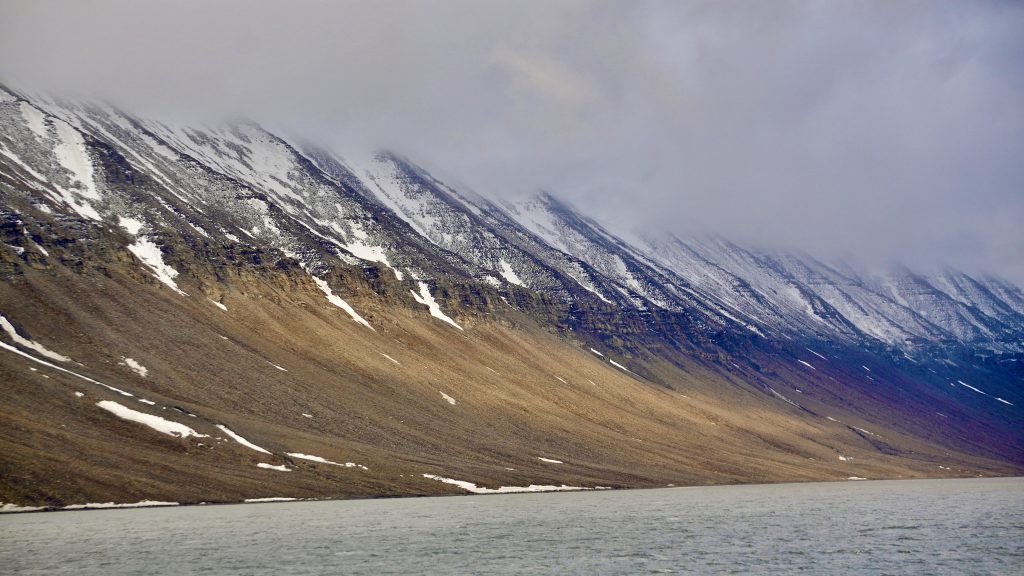
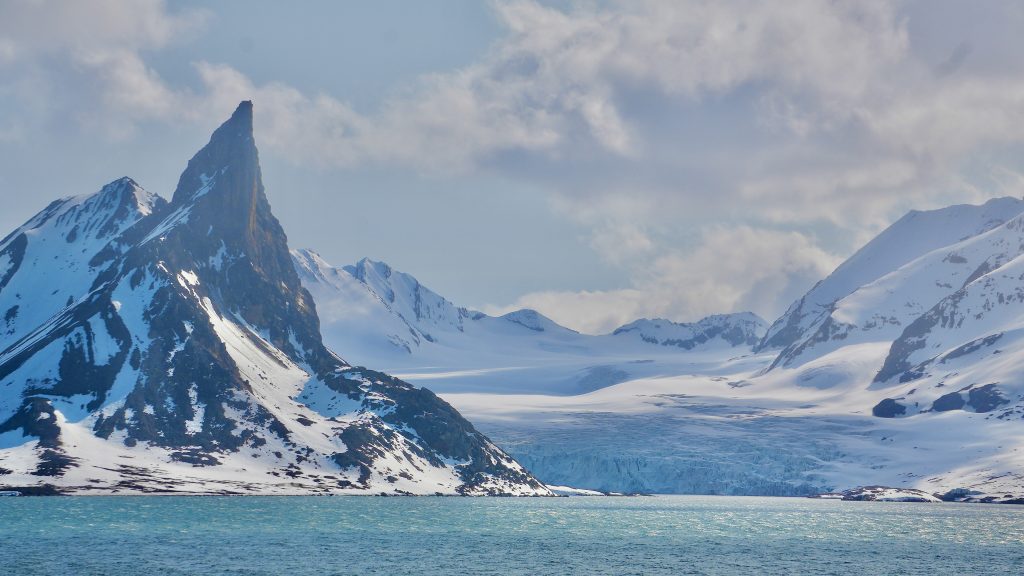


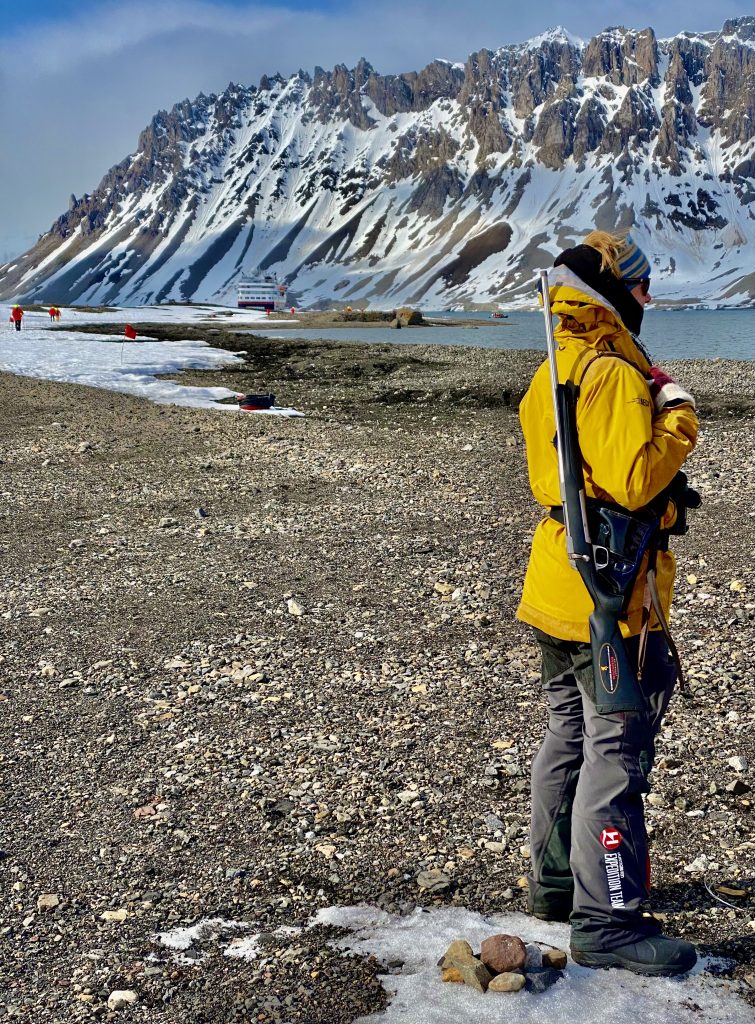
1 Comment on Svalbard
Join the Conversation